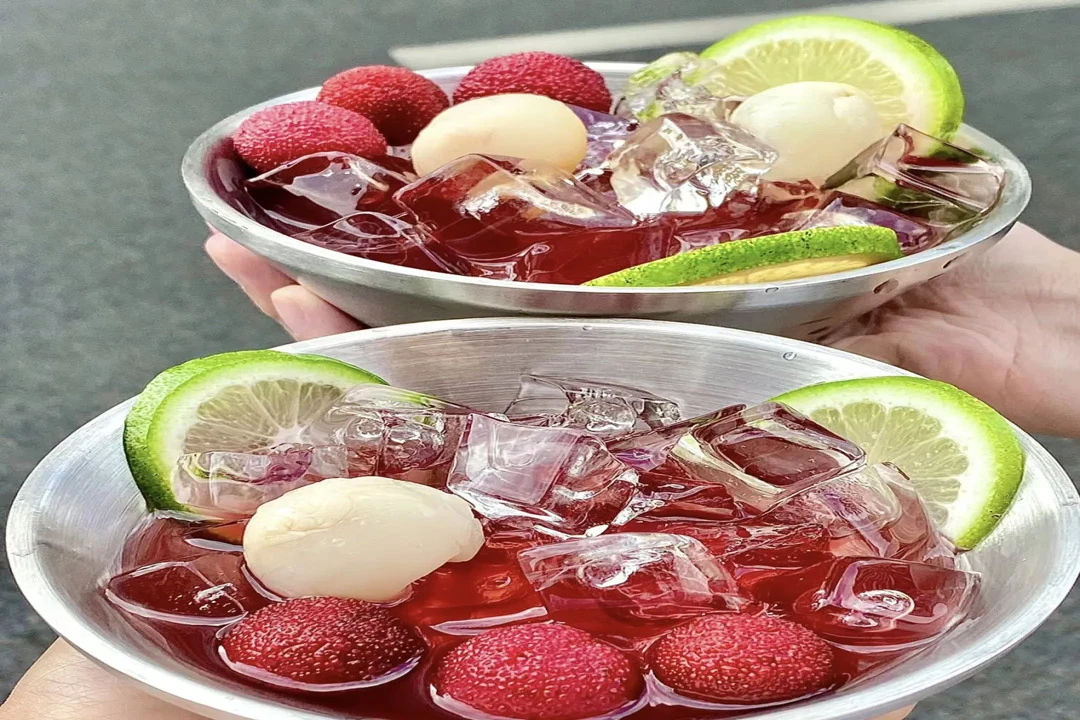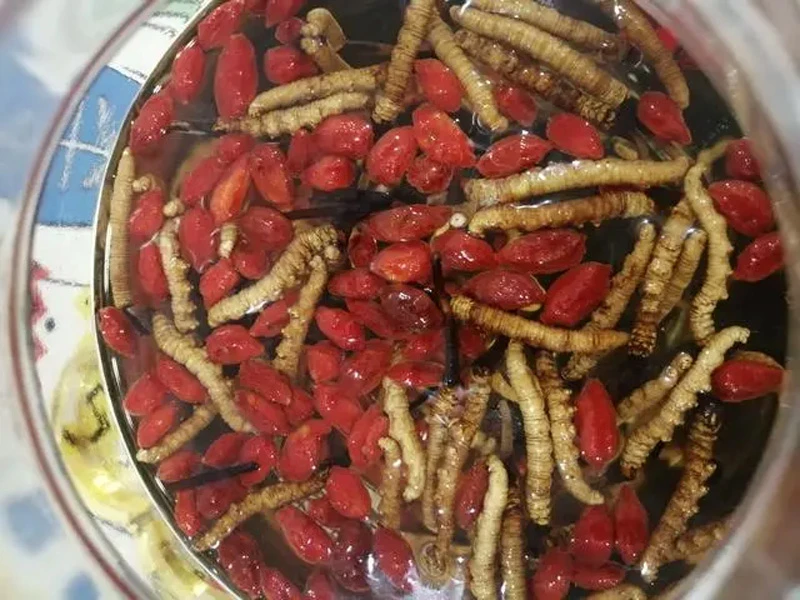Myrica rubra season is upon us, with its fleeting taste lasting just over a week. Even if one were to eat it without restraint, there's always more than can be consumed. This fruit, difficult to preserve, finds its way into wine barrels, where it transforms into a delightful concoction known as Myrica rubra wine.
However, some people have taken to using Myrica rubra wine as a medicinal remedy for diarrhea, which is quite far-fetched. What's more concerning is that some individuals allow minors to consume Myrica rubra wine, oblivious to the neurological damage alcohol can cause. This article will further reveal why not recommend using Myrica Rubra Wine for Medicinal Purposes.
The Historical Context of "Yi Jiu (毉酒) "
The Chinese character for "medicine" (医), in its traditional form "毉," has deep ties to alcohol. Xu Shen's "Shuowen Jiezi" states, "毉, the tool to treat diseases. Derived from 'shaman (巫) ' and ' alcohol (酉)'." Similarly, the "Book of Rites" also mentions "毉酒," clearly connecting ancient Chinese medicine to shamanism and alcohol.
In an era when humanity did not understand alcohol's neurodepressive effects, the hallucinations induced by alcoholic beverages were naturally associated with divine revelations and transformative experiences akin to shamanistic rituals. Ancient observers also noted that fermented grains and fruits effectively repelled insects and ants. Thus, the concept that drinking alcohol is beneficial to health took root.
Though this understanding of nature was flawed, alcohol played a crucial role in Chinese medicine for millennia and had positive effects. The Han Dynasty medical text "Fifty-Two Prescriptions" unearthed from Mawangdui records more than forty ways in which alcohol was used to treat ailments.
Methods included disinfecting wounds with alcohol, using alcohol-soaked reeds to alleviate itching, and boiling silkworm eggs, snake meat, and water chestnut in alcohol to enhance their antibacterial and deodorizing effects. Bathing in alcohol accelerated blood circulation and promoted the shedding of scabs—a highly advanced medical practice for its time, which still holds scientific merit today and embodies the essence of ancient Chinese medical diagnosis and treatment.
However, the "Fifty-Two Prescriptions" does not mention the current trend of making medicinal wines. Instead, alcohol was primarily used as a disinfectant for external use, as a medium for soaking medicinal herbs, or as a cooking ingredient.
The Shift in Chinese Medicine During the Song Dynasty
During the Song Dynasty, which valued literary culture over martial prowess, there was a peak in intellectuals influencing public opinion. This period saw the rise of a disturbing trend: literati involvement in medicine. Fan Zhongyan's statement, "If I cannot be a good statesman, I will be a good physician," epitomizes this shift.
The participation of literati in medicine had two disastrous consequences: first, Chinese medicine became increasingly detached from clinical experience and began to seek philosophical support. Today, many terms and theories in Chinese medicine—such as yin-yang, cold-heat deficiency-excess, sovereign-minister-assistant-envoy, and the two fires of sovereign and minister—became widespread after the Song Dynasty and were heavily influenced by officialdom culture. Second, literati themselves lacked the physical strength for invasive surgical treatments, making drug selection, decocting herbs, and preparing medicinal wines far easier tasks.
Meanwhile, at the end of the Song Dynasty and the beginning of the Yuan Dynasty, distillation technology entered the Central Plains with the Mongol invaders. The Chinese, who had been brewing for thousands of years, experienced distilled liquor with an alcohol content exceeding 24° for the first time, experiencing the thrilling stimulation it provided.
Although in the eyes of literati gentlemen who advocated the Doctrine of the Mean and cherished elegance, huangjiu (yellow wine) remained an elegant beverage, baijiu (white liquor) was deemed "stinky alcohol" only fit for commoners. However, the higher alcohol content of baijiu solved an important problem: preservation.
Thus, literati faithfully adhered to the ancient medical texts' theory that "alcohol is the leader among medicines," simplifying or even abandoning the complex herbal preparation procedures. Regardless of fruits, vegetables, birds, fish, or insects, they were simply thrown into distilled baijiu, becoming complex formulations akin to sovereign, minister, assistant, and envoy in traditional Chinese medicine. With alcohol's preservative effect, the plants and animals immersed in it seemed to remain fresh and original, creating an illusion of freshness and authenticity.
The Rise of Medicinal Wines in the Ming and Qing Dynasties
Post-Song Dynasty, under the influence of philosophical-based "literati medicine," medicinal wines became widespread. Myrica rubra wine serves as a typical example of this trend.
The belief in Myrica rubra's efficacy in treating diarrhea originates from the Five Flavors Theory proposed in the "Huangdi Neijing" (Yellow Emperor's Inner Canon): "Pungent disperses, sour consolidates, sweet moderates, bitter hardens, salty softens."
This theory simplifies the categorization of flavors based on their physiological effects. For instance, pungent flavors induce sweating, while sour flavors cause contraction throughout the body.
The Medicinal Fallacy of Myrica Rubra Wine
The idea that Myrica rubra wine can treat diarrhea is a classic example of unfounded theory. Subsequent generations of traditional Chinese medicine practitioners have used these standards for selecting medications: Cornelian cherry fruit can stop bleeding, bitter orange can treat vomiting, and amur cork tree fruit can consolidate semen. Myrica rubra, consequently, has been considered a tool for stopping diarrhea.
Direct consumption of Myrica rubra is not the most effective way to extract its medicinal properties. Instead, preparations like medicinal wines, rooted in the Five Flavors Theory, are mistakenly regarded as direct methods of extracting Myrica rubra's anti-diarrheal components.
In fact, Myrica rubra wine, which extracts fruit sugars, fruit acids, amino acids, and adds a certain amount of rock sugar, has already concealed the unique aroma imparted by yeast fermentation. From the perspective of China's traditional wine evaluation system, it is not considered a top-quality wine.
On the contrary, it bears closer resemblance to Western cocktails made with highly distilled spirits like vodka and tequila, which are then combined with various fruits and sweeteners to create flavored cocktails.
From a beverage perspective, Myrica rubra wine, along with similar beverages such as green plum wine and white peach wine, serve as interesting mixed drinks. However, in terms of medicinal value, Myrica rubra wine's claims of "sterilization" and "anti-diarrhea" resemble baseless assertions. By the time alcohol enters the large intestine, most of its sterilizing effects have been absorbed into the bloodstream and liver. Moreover, the fine hairs on the surface of Myrica rubra stimulate intestinal peristalsis, leading to rapid bowel movements, while the organic acids in Myrica rubra increase the acidity of the digestive tract, hastening digestion.
Therefore, while Myrica rubra can accelerate intestinal emptying and aid in recovery from foodborne illnesses that cause diarrhea, its efficacy has no relation to being brewed into wine. Moreover, in cases of bacterial infections such as dysentery, Myrica rubra wine may exacerbate the condition.
Moderate alcohol consumption for relaxation is acceptable, and it's true that improved mood has positive effects on the body. Therefore, using Myrica rubra wine as a tool to adjust one's lifestyle is perfectly harmless.
However, if one continues to use it to treat diarrhea, the term "anti-intellectualism" accurately describes such actions.



